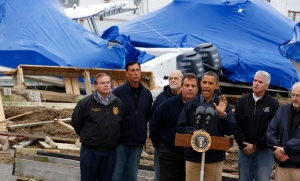Today will be remembered as a glorious day for old-school journalism.
Ansa, the main Italian news agency, broke the news that Pope Benedict XVI will step down on February 28th at 8pm thanks to the ability of its reporter to understand Latin.
The experienced Giovanna Chirri, who habitually covers the Vatican, understood without any possible doubt thanks to her solid classic education that the Pope, in his fluent, heavily accented Latin, “well aware of the seriousness of this act” and with “full freedom”, was in fact declaring:
“I renounce the ministry of Bishop of Rome, Successor of Saint Peter, entrusted to me by the Cardinals on 19 April 2005, in such a way, that as from 28 February 2013, at 20:00 hours, the See of Rome, the See of Saint Peter, will be vacant and a Conclave to elect the new Supreme Pontiff will have to be convoked by those whose competence it is.”
In short, a Pope was resigning for the first time since the Middle Ages.
The news is quite shocking but, surprisingly enough, is not completely unexpected. In the last couple of years there have been countless reports about Joseph Ratzinger’s willingness to leave. Some cardinals even confirmed on the record the likelihood of such a decision in the future.
Nevertheless only a few, like his brother Georg Ratzinger, knew that the decision was to be announced today. During an apparently ordinary consistory which was meant to approve three canonizations, the Pope said that “due to an advanced age” he feels to be “no longer suited to an exercise of the Petrine ministry”, in particular in “today’s world, subject to so many rapid changes and shaken by questions of deep relevance for the life of faith.”
The task needs “both strength of mind and body”, two virtues that the Pope feels he has lost in the last months. During a press conference his spokesperson Father Lombardi ruled out the possibility of a serious illness, even though some sources talk about a possible leukemia, and he confirmed that Benedict XVI will retire in a monastery where he will pray and study. Therefore he will not interfere with his successor’s work.
Only 7 years after the death of John Paul II, in April 2005, the Vatican is preparing to hold another conclave. Once again the international media will be watching Saint Peter’s Square, Rome, and the chimney that will tell whether the new Pope has been appointed (white smoke) or another round of votes is needed (black smoke).
The media landscape has changed enormously since Joseph Ratzinger was elected and all the mistakes that were made at the time of Wojtyla’s death – the inability to recognize whether the smoke was black or white, the interpretations of the door of Saint Peter being open or closed – will surely be amplified by Twitter and other social networks.
Moreover, Ratzinger’s retirement is likely to trigger more taste for intrigue and less emotion that Wojtyla’s death. When the latter died, April 2nd at 9,34 pm, I was in a taxi in Rome and the driver stopped the car after hearing the news. We both went out from the cab, and we found ourselves, me and the taxi-driver, in the middle of a bridge looking at the clear spring sky with hundreds of people doing the same around us. Rome had never been such a holy city, for me at least.
Benedict XVI will not be remembered as the most charismatic among the Popes, notwithstanding his attempts not to be perceived only as a cold German theologist.
He was the first to use Twitter with his ‘Pontifex’ account, for instance, but he never managed to be loved like his predecessor, the Pole Karol Wojtyla. Social networks and journalism in the digital age have been a problem more than an opportunity for the Vatican in the last couple of years: the scandals of paedophilia inside the Church and the corruption scandals as reported by Gianluigi Nuzzi in ‘His Holiness’ have had an unprecedented degree of digital resonance and they need a firm control, one that Benedict XVI could not provide owing to his age and health.
In the book ‘Light of the world’, an interview with the journalist Peter Seewald, Ratzinger basically said that a Pope’s resignation is admissible, but not in times of hardship for the Church.
The storm surrounding the Holy Siege, at least for now, is over. The Pope is therefore free to make his own choice, just like the protagonist of ‘Habemus Papam’, the last, prophetic film by Nanni Moretti, where a man appointed to lead the Church does not feel up to the task, and renounces.
Cristina Marconi is an Italian freelance journalist based in London. She has been working as a correspondent from Brussels for the Italian newswire TMNews, while contributing at the same time for the newspapers Il Messaggero and Il Mattino. She used to write only about economic and financial affairs, but her reporting from the UK has (fortunately) extended also to politics, arts, fashion and culture. She writes a blog in Italias, cristinamarconi.com
She was a Journalist Fellow at the Reuters Institute in 2011-12, where she researched whether the eurozone crisis contributed to creating a ‘European press’,
Her research paper can be downloaded: Does the watchdog bark? The European Union, the Greek debt crisis, and the press





